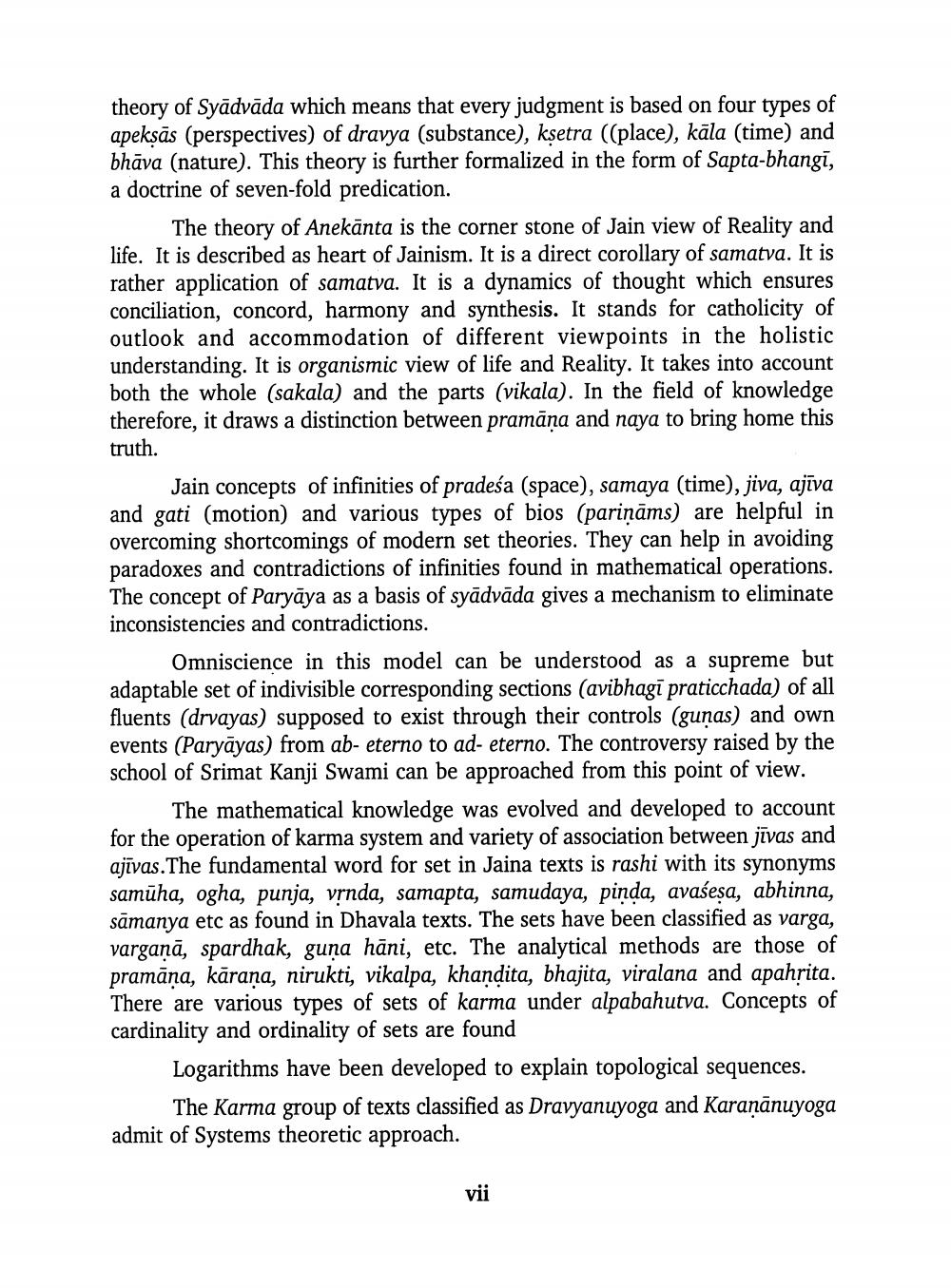Book Title: Concept of Paryaya in Jain Philosophy Author(s): S R Bhatt, Jitendra B Shah Publisher: L D Indology Ahmedabad View full book textPage 9
________________ theory of Syadvada which means that every judgment is based on four types of apeksas (perspectives) of dravya (substance), ksetra ((place), kala (time) and bhava (nature). This theory is further formalized in the form of Sapta-bhangi, a doctrine of seven-fold predication. The theory of Anekanta is the corner stone of Jain view of Reality and life. It is described as heart of Jainism. It is a direct corollary of samatva. It is rather application of samatva. It is a dynamics of thought which ensures conciliation, concord, harmony and synthesis. It stands for catholicity of outlook and accommodation of different viewpoints in the holistic understanding. It is organismic view of life and Reality. It takes into account both the whole (sakala) and the parts (vikala). In the field of knowledge therefore, it draws a distinction between pramana and naya to bring home this truth. Jain concepts of infinities of pradesa (space), samaya (time), jiva, ajiva and gati (motion) and various types of bios (parinams) are helpful in overcoming shortcomings of modern set theories. They can help in avoiding paradoxes and contradictions of infinities found in mathematical operations. The concept of Paryaya as a basis of syadvada gives a mechanism to eliminate inconsistencies and contradictions. Omniscience in this model can be understood as a supreme but adaptable set of indivisible corresponding sections (avibhagi praticchada) of all fluents (drvayas) supposed to exist through their controls (gunas) and own events (Paryayas) from ab- eterno to ad- eterno. The controversy raised by the school of Srimat Kanji Swami can be approached from this point of view. The mathematical knowledge was evolved and developed to account for the operation of karma system and variety of association between jivas and ajivas. The fundamental word for set in Jaina texts is rashi with its synonyms samuha, ogha, punja, vrnda, samapta, samudaya, pinda, avasesa, abhinna, samanya etc as found in Dhavala texts. The sets have been classified as varga, vargana, spardhak, guna hani, etc. The analytical methods are those of pramana, karana, nirukti, vikalpa, khandita, bhajita, viralana and apahrita. There are various types of sets of karma under alpabahutva. Concepts of cardinality and ordinality of sets are found Logarithms have been developed to explain topological sequences. The Karma group of texts classified as Dravyanuyoga and Karananuyoga admit of Systems theoretic approach. viiPage Navigation
1 ... 7 8 9 10 11 12 13 14 15 16 17 18 19 20 21 22 23 24 25 26 27 28 29 30 31 32 33 34 35 36 37 38 39 40 41 42 43 44 45 46 47 48 49 50 51 52 53 54 55 56 57 58 59 60 61 62 63 64 65 66 67 68 69 70 71 72 73 74 75 76 77 78 79 80 81 82 83 84 85 86 87 88 89 90 91 92 ... 134
